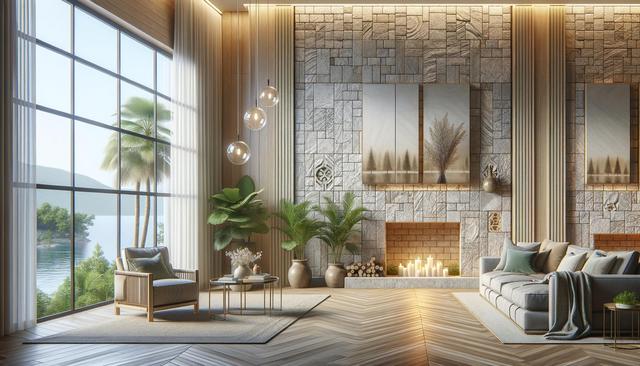Understanding Faux Stone Panels
Faux stone panels are manufactured wall coverings designed to replicate the look and texture of natural stone. Crafted from durable materials such as high-density polyurethane or composite polymers, these panels offer a lightweight and easy-to-install alternative to real stone. They are molded from real stone surfaces to ensure authentic detail and texture, making them visually indistinguishable from the natural materials they mimic. This makes faux stone an attractive option for homeowners and designers seeking to add character and depth to a space without the cost and labor associated with real masonry.
One of the key advantages of faux stone panels is their versatility. They can be applied to a wide range of surfaces, both indoors and outdoors, and are available in various styles and colors to suit different design preferences. Whether you’re aiming for a rustic, modern, or traditional look, there’s likely a faux stone design that aligns with your vision. Additionally, these panels are typically resistant to moisture, UV rays, and temperature fluctuations, enhancing their suitability for exterior applications.
Interior Accent Walls with Faux Stone
Incorporating faux stone panels into interior accent walls is a popular way to introduce texture and sophistication into a room. These panels can be used in living rooms, bedrooms, hallways, or even bathrooms to create a focal point that draws the eye and adds depth to the overall design. They work especially well in spaces where natural elements are desired but traditional stone would be impractical or too heavy.
Some common applications for interior accent walls include:
- Behind fireplaces or wood stoves
- Bedroom headboard walls
- Entryways and foyers
- Media walls in living rooms
Faux stone panels are also relatively easy to install, often requiring only adhesive and basic tools. This makes them a feasible DIY project for many homeowners, reducing installation costs and allowing for creative customization.
Enhancing Outdoor Features
Faux stone panels are an excellent choice for elevating the appearance of exterior spaces. Their weather-resistant construction ensures they maintain their integrity and appearance even when exposed to the elements. Whether you’re designing a backyard patio, upgrading your home’s façade, or building an outdoor kitchen, faux stone can add a timeless and elegant touch.
Popular outdoor uses include:
- Exterior house siding or skirting
- Garden and retaining walls
- Outdoor fireplaces and fire pits
- Pillars, columns, and fence posts
Because faux stone is significantly lighter than real stone, it can be applied to existing structures without the need for additional support or reinforcement. This flexibility makes it a practical solution for renovations and upgrades that aim to enhance curb appeal.
Benefits Beyond Aesthetics
While the visual appeal of faux stone panels is a significant draw, they also offer a variety of functional benefits. For one, they provide an added layer of insulation, which can contribute to better energy efficiency in both residential and commercial buildings. Their resistance to mold, mildew, and pests makes them a long-lasting and low-maintenance option for many environments.
Additional benefits include:
- Cost-effectiveness compared to natural stone
- Quick installation with minimal disruption
- Easy replacement of damaged panels
- Environmentally friendly options available
These attributes make faux stone panels a smart investment for anyone looking to improve the appearance and performance of their property without incurring the costs and challenges of traditional materials.
Choosing the Right Style and Installation Tips
Selecting the right faux stone panel design involves considering the architectural style of your space, desired color palette, and the purpose of the installation. With numerous styles available—from stacked stone and river rock to ledgestone and cobblestone—there’s plenty of room to tailor your selection to your personal taste and the surrounding décor.
When preparing for installation, it’s important to:
- Accurately measure the surface area
- Use manufacturer-recommended adhesives and fasteners
- Plan panel layout to minimize visible seams
- Consider corner pieces and trim for a polished finish
While many installations can be completed by skilled DIYers, consulting a professional is advisable for large or complex projects. Proper preparation and execution will ensure the panels look natural and remain securely attached for years to come.







